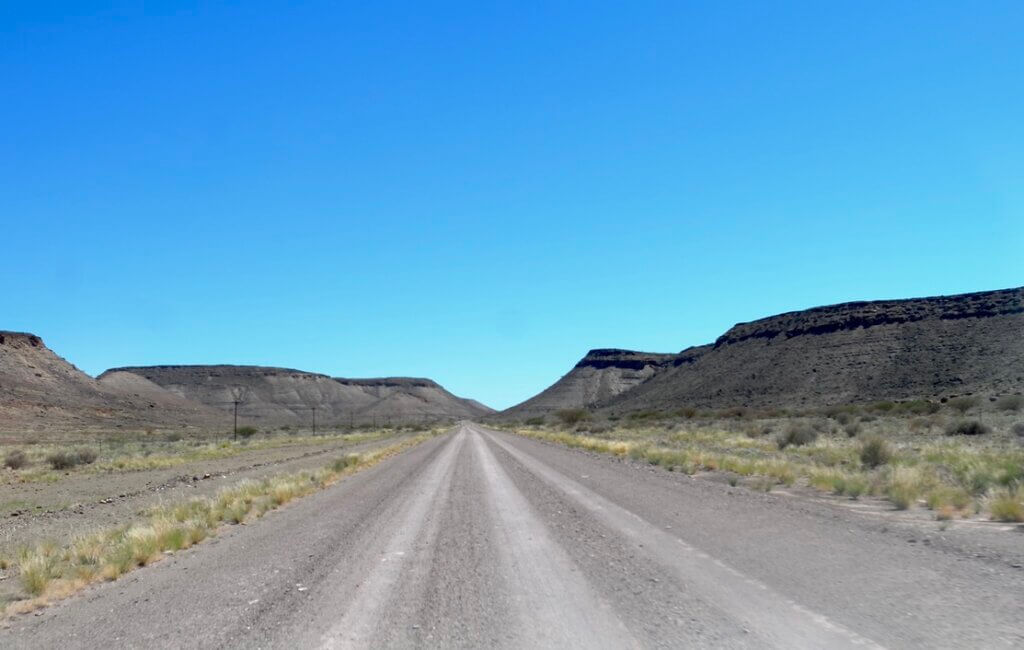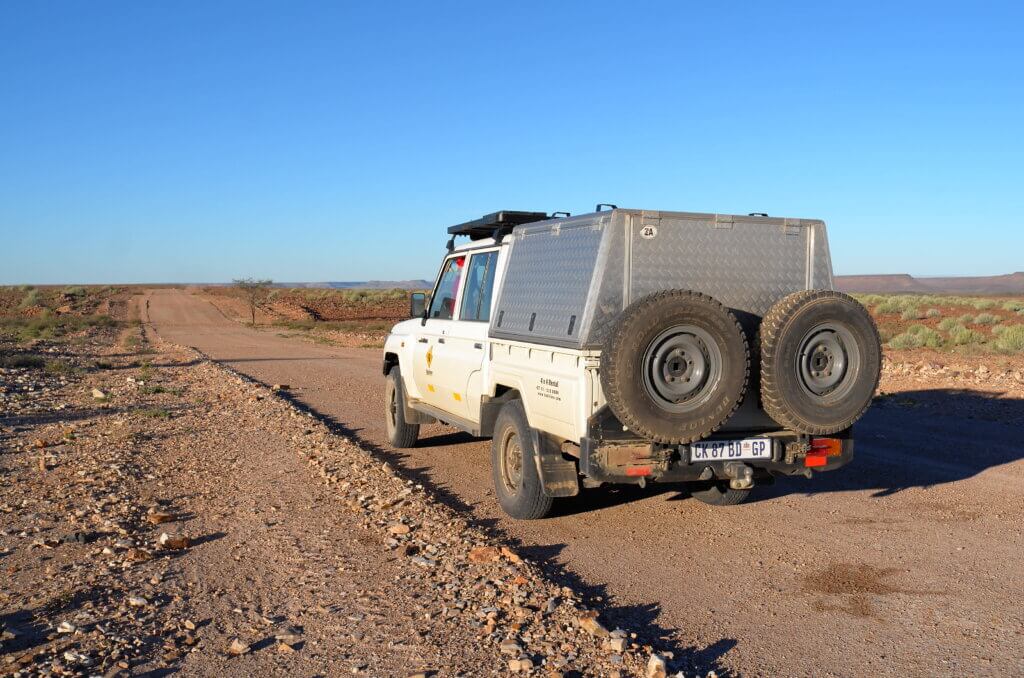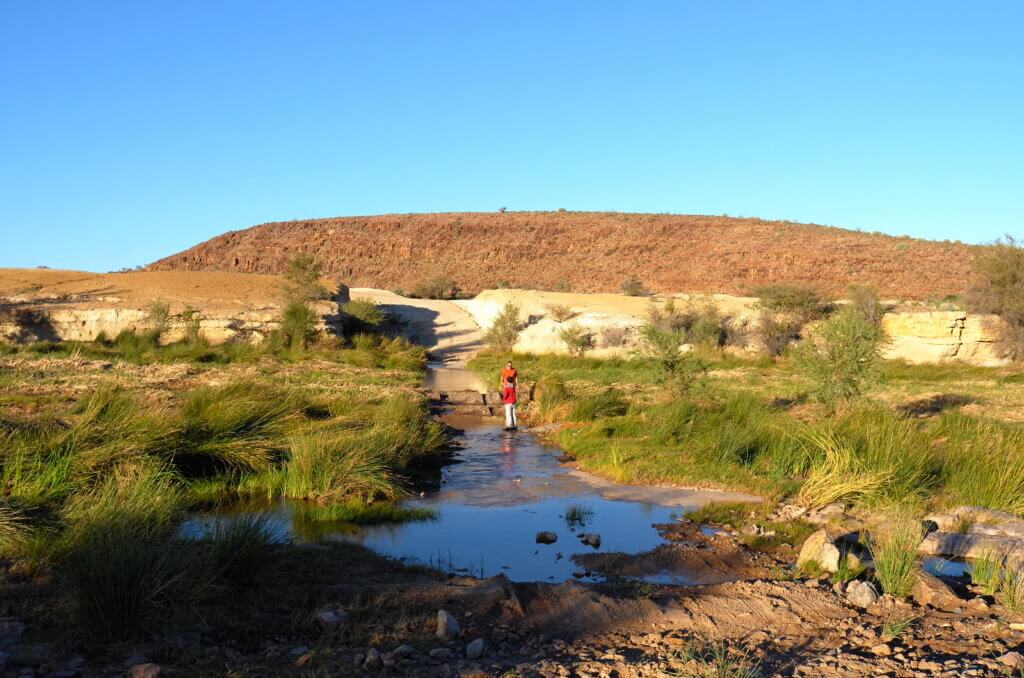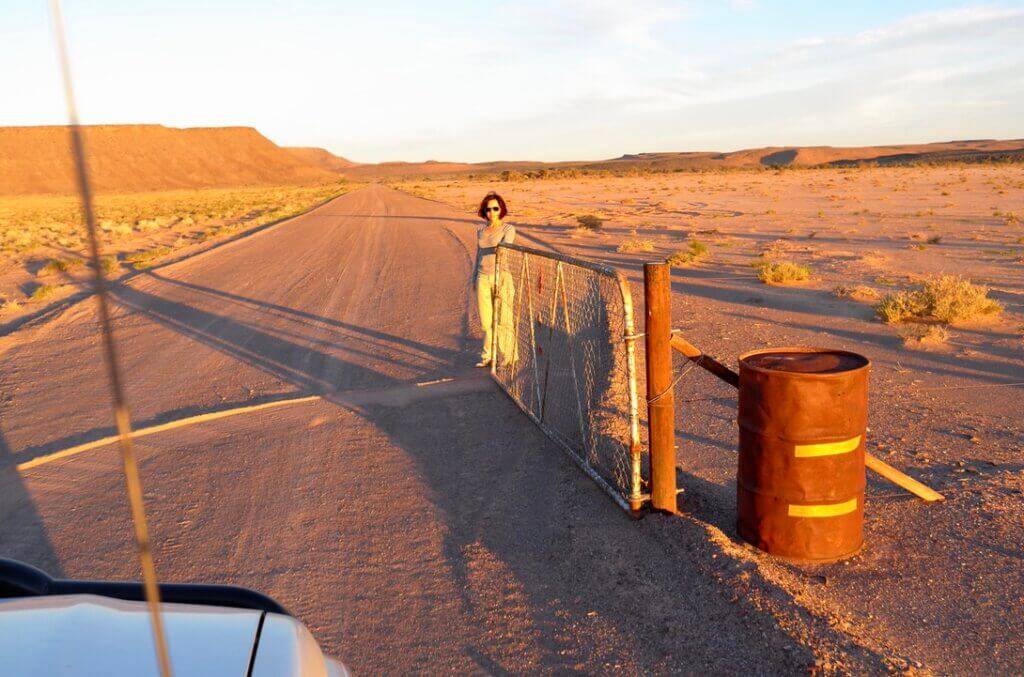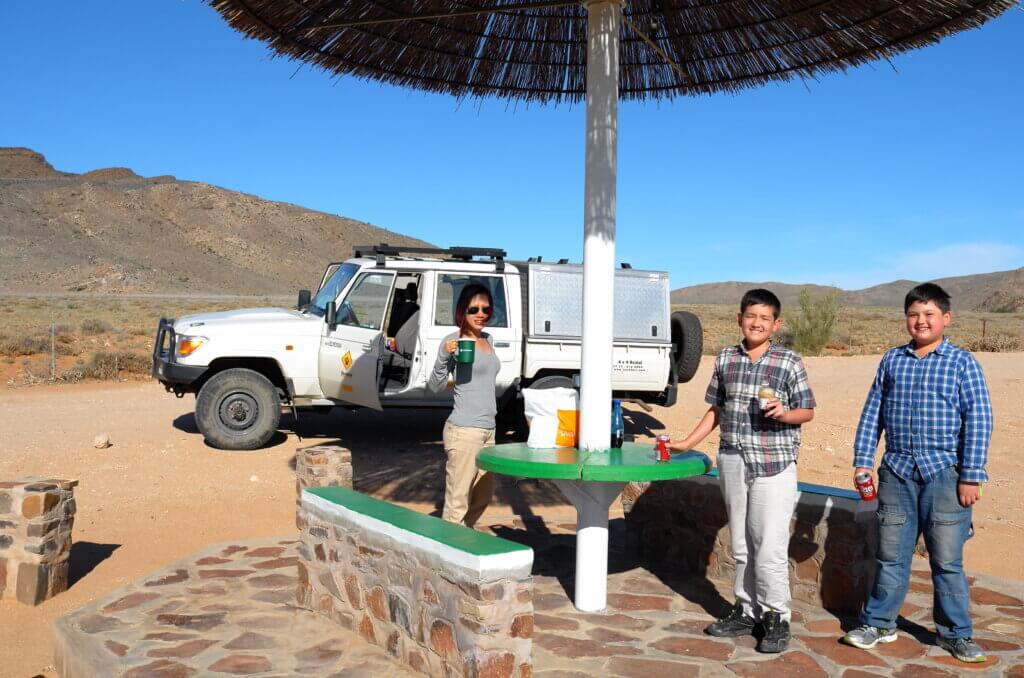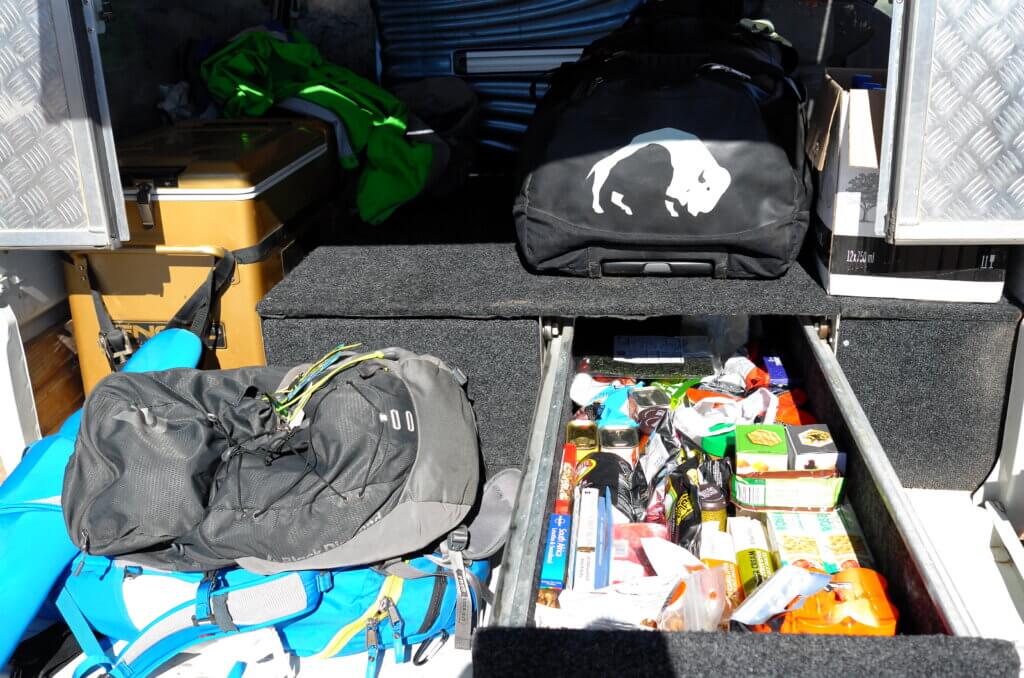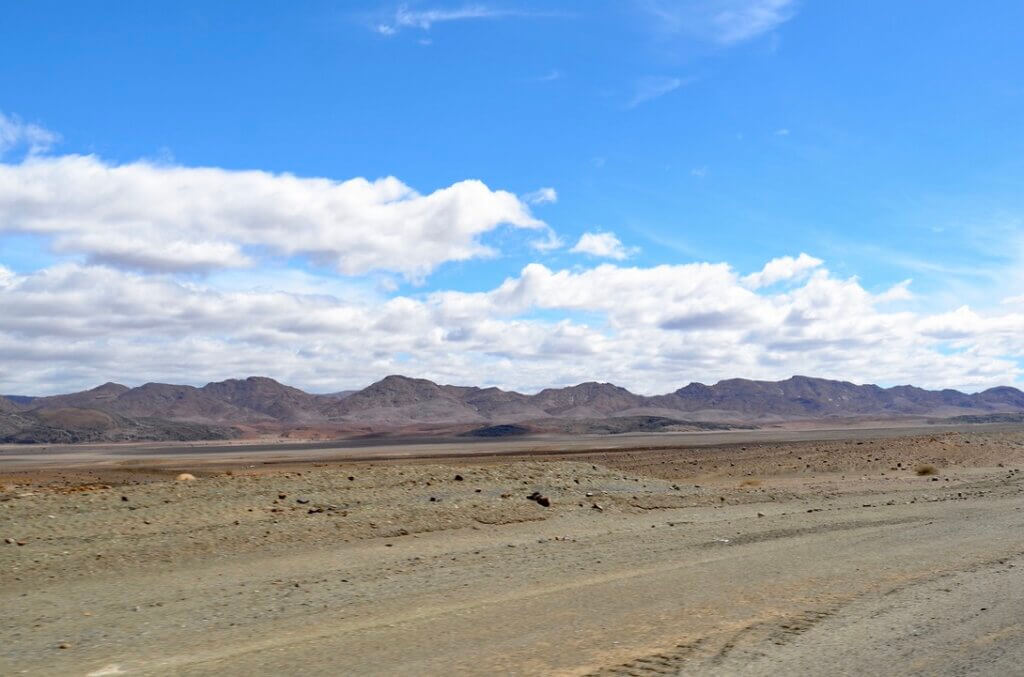We travel through endless miles of completely barren land with nothing but rocks and sand and the odd shrub surviving through sheer determination. The sky is so blue that it feels like a hand painted backdrop to the rocky landscape. We hardly encounter signs of human life. After passing a small Nama settlement of rickety huts by the road side just after the border, we drive for hours without seeing so much as another car. The gravel roads full of sharp rocks, sudden dips, slippery sandy patches and rivers crossing them are treacherous.
And yet, Namibia has a primal and addictive beauty. Its pristine land barely touched by man is what the world must have looked like a million years ago. The danger which lurks everywhere makes our senses more keenly aware of all the details of our environment. We carry 160L of petrol and ample water and food supplies with us because breaking down in the middle of nowhere could mean waiting seven days for the next vehicle to come by and rescue us. When we need to ford a river, one of us walks out to gauge the depth of the water, making sure there is no crocodile lurking in a deep pool. And we make it a point to shake our shoes before wearing them in case a scorpion has set up residence in them during the night.

